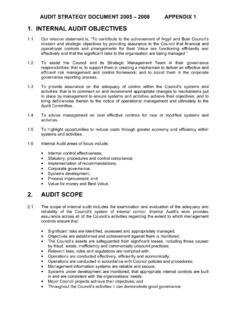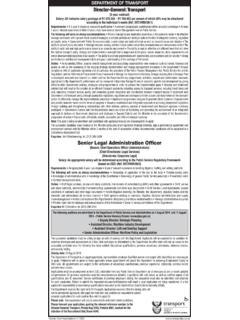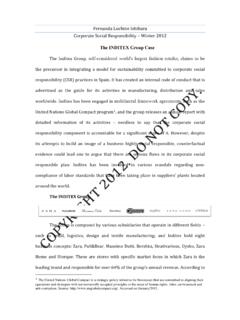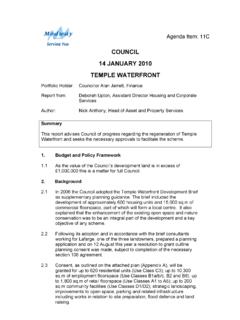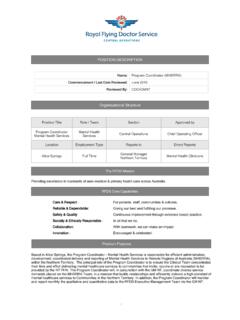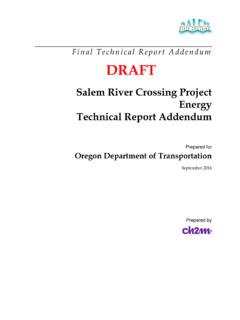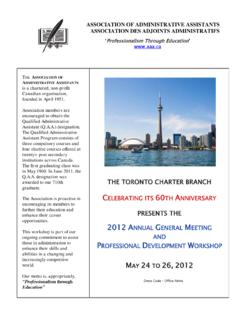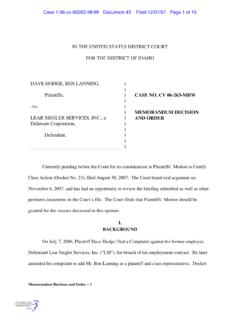Transcription of Process for Change - Argyll and Bute
1 Created by Neevia Document Converter trial version Process for Change Workforce Deployment HHiigghh LLeevveell DDeessiiggnn RReeppoorrtt AAuutthhoorr:: GGoorrddoonn MMuunnrroo DDaattee:: 2200tthh FFeebbrruuaarryy 22000099 VVeerrssiioonn Created by Neevia Document Converter trial version Process FOR Change - HIGH LEVEL DESIGN REPORT Workforce Deployment Theme 2 Contents 1 EXECUTIVE SUMMARY 2 INTRODUCTION 3 DESIGN OVERVIEW 4 DESIGN PRINCIPLES 5 RECOGNITION EVENTS 6 IMPLEMENTATION PLAN 7 REVISED BUSINESS CASE 8 ALTERNATIVE OPTIONS ASSESSED 9 RISKS 10 RECOMMENDATIONS Appendices 1 High level Design Blueprint 2 Summary Business Case 3 Implementation Plan Created by Neevia Document Converter trial version Process FOR Change - HIGH LEVEL DESIGN REPORT Workforce Deployment
2 Theme 3 1. EXECUTIVE SUMMARY Design Overview The future blueprint involves staff having the appropriate technology and equipment to enable them to access all relevant documents electronically and thus provide a complete service to customers first time, whether they are working at home, on the move, or in a Council office. Modernising the workplace paired with the cultural shift towards widespread adoption of new ways of working such as desk sharing and open plan office layouts will enable the workplace to become a much more dynamic and responsive environment. Workstations can be shared, touchdown centres accommodate peripatetic workers and meeting rooms can double up as quiet room space.
3 The development of new ways of working including flexible, mobile and home working will assist in any future property rationalisation exercise and the likely reduction in office buildings along with the associated maintenance and running costs. Validation of Key Financial Assumptions The Shared Services Diagnostic (SSD) projected savings of over 5 years from the Workforce Deployment Theme. This High Level Design Phase has included a review of the benefits emerging from mobile and flexible working in other Local Authorities and organisations and these findings have been used to validate the financial assumptions for Argyll and Bute Council.
4 The future design is based on the following financial assumptions: Savings of 26 FTE employees through increased productivity and less time spent on administrative support and the recruitment Process . These savings will be calculated through natural turnover no provision has been made for redundancies; A reduction of 5% of work mileage claims; A reduction of 25% in sickness levels for the staff groups identified with the new working styles; 138,000 reduction in property maintenance and running costs by reducing the number of Council offices; 14,000 reduction in office furniture, printing and stationery Created by Neevia Document Converter trial version Process FOR Change - HIGH LEVEL DESIGN REPORT Workforce Deployment Theme 4 Recommendations The Council is asked to approve the following recommendations: 1.
5 The High Level Design blueprint for Workforce Deployment, as summarised at section 3 below and set out in detail in Appendix 1, as a basis for proceeding to Detailed Design; 2. The updated Business Case, as summarised at section 7 below and set out in detail at Appendix 2, as a basis for proceeding to Detailed Design. 3. The proposed Implementation plan, as summarised at section 6 below and set out in detail at Appendix 3 as a basis for proceeding to Detailed Design. 2. INTRODUCTION Arising from the Council s decision in October 2008 to approve the recommendations contained in the Shared Services Diagnostic Project Final Report, seven Opportunity Themes were approved to proceed to the High Level Design Stage.
6 The Workforce Deployment Theme is one of the seven approved Themes. The outputs from the High Level Design stage will be considered by the HR Strategic Board, the Strategic Management Team and discussed at the Council Business Day on 24 February, prior to being presented for consideration by the full Council on 5 March 2009. Purpose of Document The purpose of this document is to seek approval to proceed to the Detailed Design stage for this Theme based on the proposed design and associated business case and implementation plan. The resources for Detailed Design will be identified by the Programme Manager and detailed in the Process For Change High Level Design Summary Report.
7 This document sets out an overview of the proposed future design, business case and implementation plan. The more detailed blueprint of the future high level design, and associated business case and implementation plans are attached as Appendices. Created by Neevia Document Converter trial version Process FOR Change - HIGH LEVEL DESIGN REPORT Workforce Deployment Theme 5 Background The following diagram illustrates where the Workforce Deployment theme sits in relation to other Themes being progressed as part of Process For Change : Flexible, mobile and home working has grown in recent years because of: Technology Home working could not have developed without the ability to communicate with the office base via computers and mobile phones.
8 The spread of broadband and cheaper digital technology means that this ability has increased and will continue to do so. And, of course, the general population is becoming much more IT-literate. Cost savings - Introducing home working and desk sharing can lead to savings in office space. Improving productivity -There is evidence that working from home improves productivity, and reduces absence and labour turnover. Work-life balance - By cutting travel , reducing stress and enabling people to work when it suits them, it is argued that working from home is a means of harmonising work and family commitments. Green issues - Reducing travel should reduce pollution.
9 With growing concern about global warming, this is likely to be increasingly cited as a PropertyCustomer ManagementRules Based Eligibility & AssessmentWorkforce DeploymentProcurement & Managing ContractsManaging DemandMeeting DemandEDRMI nterdependencies of the OpportunitiesCreated by Neevia Document Converter trial version Process FOR Change - HIGH LEVEL DESIGN REPORT Workforce Deployment Theme 6 further reason for introducing home working, and will be used by organisations wanting to promote a green image. Argyll and Bute Council faces major challenges in relation to its unique geography, changing population and higher costs of delivering services and it seems likely that benefits could be derived from the mobile technologies available today.
10 Mobile and Home Working Pilot A Mobile and Home Working Pilot Project involving staff from Building Standards and Protective Services successfully reached the end of its first phase in January 2009. This project has provided valuable information and makes a number of recommendations for consideration when introducing a broader corporate roll out of flexible, mobile and home working. The key objectives of the pilot were to:- Oversee the acquisition, implementation and testing of all required hardware, business software, security software and communications infrastructure to support a targeted group of Council Officers, Produce a tangible cost model, to consider the implications for the Council s security policy and to contribute towards development of a business case for future roll out of mobile and home working across appropriate areas of the Council.



